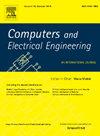ANFIS-SA-based design of a hybrid reconfigurable antenna for l-Band, C-band, 5G and ISM band applications
IF 4
3区 计算机科学
Q1 COMPUTER SCIENCE, HARDWARE & ARCHITECTURE
引用次数: 0
Abstract
This study presents a novel hybrid reconfigurable antenna design optimized using an Adaptive Neuro-Fuzzy Inference System (ANFIS) enhanced with a Simulated Annealing (SA) algorithm for l-band, C-band, 5G, and ISM applications. The antenna is fabricated on an FR-4 substrate with dimensions of 17 × 28 × 1.6 mm³, and two PIN diodes are employed to achieve frequency and radiation pattern reconfigurability. In the ON![]() ON state, the antenna operates in dual bands, covering 1.33–1.38 GHz (L-band) and 3.57–3.95 GHz (C-band). For the OFF-ON state, it operates from 3.56 to 3.95 GHz (C-band, 5G). In the ON
ON state, the antenna operates in dual bands, covering 1.33–1.38 GHz (L-band) and 3.57–3.95 GHz (C-band). For the OFF-ON state, it operates from 3.56 to 3.95 GHz (C-band, 5G). In the ON![]() OFF state, it covers 1.50–1.54 GHz (L-band) and 5.66–5.90 GHz (ISM band), while in the OFF-OFF state, it operates from 5.49 to 5.82 GHz (ISM band). The antenna exhibits common bands at 3.8 GHz (C-band) and 5.8 GHz (ISM) across different states, facilitating pattern reconfigurability. ANFIS-SA is applied to optimize the switch locations, significantly improving resonance frequency and S11 performance. The antenna supports beam steering between 0° and 180°, enhancing adaptive coverage for modern applications such as Wi-Fi, Vehicle-to-Vehicle (V2 V), and Vehicle-to-Infrastructure (V2I) communication. This study addresses a critical gap by combining hybrid optimization techniques to improve frequency agility and radiation pattern control for next-generation wireless systems.
OFF state, it covers 1.50–1.54 GHz (L-band) and 5.66–5.90 GHz (ISM band), while in the OFF-OFF state, it operates from 5.49 to 5.82 GHz (ISM band). The antenna exhibits common bands at 3.8 GHz (C-band) and 5.8 GHz (ISM) across different states, facilitating pattern reconfigurability. ANFIS-SA is applied to optimize the switch locations, significantly improving resonance frequency and S11 performance. The antenna supports beam steering between 0° and 180°, enhancing adaptive coverage for modern applications such as Wi-Fi, Vehicle-to-Vehicle (V2 V), and Vehicle-to-Infrastructure (V2I) communication. This study addresses a critical gap by combining hybrid optimization techniques to improve frequency agility and radiation pattern control for next-generation wireless systems.
求助全文
约1分钟内获得全文
求助全文
来源期刊

Computers & Electrical Engineering
工程技术-工程:电子与电气
CiteScore
9.20
自引率
7.00%
发文量
661
审稿时长
47 days
期刊介绍:
The impact of computers has nowhere been more revolutionary than in electrical engineering. The design, analysis, and operation of electrical and electronic systems are now dominated by computers, a transformation that has been motivated by the natural ease of interface between computers and electrical systems, and the promise of spectacular improvements in speed and efficiency.
Published since 1973, Computers & Electrical Engineering provides rapid publication of topical research into the integration of computer technology and computational techniques with electrical and electronic systems. The journal publishes papers featuring novel implementations of computers and computational techniques in areas like signal and image processing, high-performance computing, parallel processing, and communications. Special attention will be paid to papers describing innovative architectures, algorithms, and software tools.
 求助内容:
求助内容: 应助结果提醒方式:
应助结果提醒方式:


